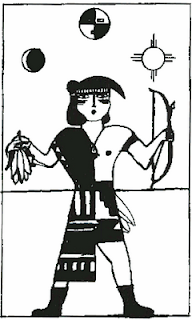The most interesting thing I have
learned in U.S. History so far, is how tycoons such as Rockefeller, Carnegie,
and Vanderbilt came to such a status, depending on their own combinations of
luck, hard work, opportunity, skill, and help from the Industrial Revolution.
However, not everything was pleasant to learn about when studying the
Industrial Revolution. In fact, I was almost brought to tears when I read about
the children who, extremely tired after a fourteen hour work day, had water
thrown in their faces to keep them awake. The documentary on the Triangle Shirt
Waist Factory was equally depressing. Luckily, however, from these events and
others like them, America came to the realization that labor laws regarding safety,
hours, and wages are necessary for the working class. While I was unpleasantly
surprised to learn about the horrors of work-life and home-life during the
Industrial Revolution, the images of women jumping from buildings and children
being maimed by machines will stick in my memory for at least the next ten
years, if not the rest of my life.
The terrible events that occurred during this time period and the
motivation for each of the Industrial Revolution tycoons, have their roots in
greed, as do the other time periods we have studied this semester. During the
Civil War, yes, Southerners were fighting for the key to their livelihoods, but
instead of having slaves, they could have had paid laborers and still made a
profit. Because of their greed, they chose to demote African Americans to a
less-than-human status in order to justify reducing their cost of living to an
unacceptable rate.
When America began to move West, railroad companies became the new face
of American greed, providing desperate immigrants with jobs, sure, but again
denying wages sufficient for comfortable lives. In the vastness of West,
Americans were still greedy for wealth in land as well, pushing the Native
Americans into reservations and harassing them even in their compliance. After
the Industrial Revolution, the average quality of life thankfully began to
rise, but the greed did not abate. Alternatively, a national spirit of
materialism developed, manifesting itself in giant mail order catalogs and the
appearance of special clothing for each event in the day, from cycling, to
walking, to dining, to dancing, and to sleeping. Although we have not yet
studied beyond 1920, I know that this materialism grew into an unmanageable,
careless greed, peaking in the “Roaring Twenties” and collapsing in the Great
Depression.
Even today, greed defines our society. We are obsessed with the latest
and greatest, and once we obtain whatever we have set our eyes on, be it an
cell phone, a car, or a pair of shoes, we immediately take it for granted and
move on to the next item on our lists. Although greed is the constant in
American History, or at least the eras we have studied this semester, I would
choose to call the period from 1865-1920 “The Age of Transformation.” From unit
to unit, and within each unit, the American people, their values and livelihoods,
have undergone continuous change. Black men gained the right to vote. Machines
took over the American economy. With immigration, our culture became more
diverse. Essentially, we grew to better respect our fellow man.








